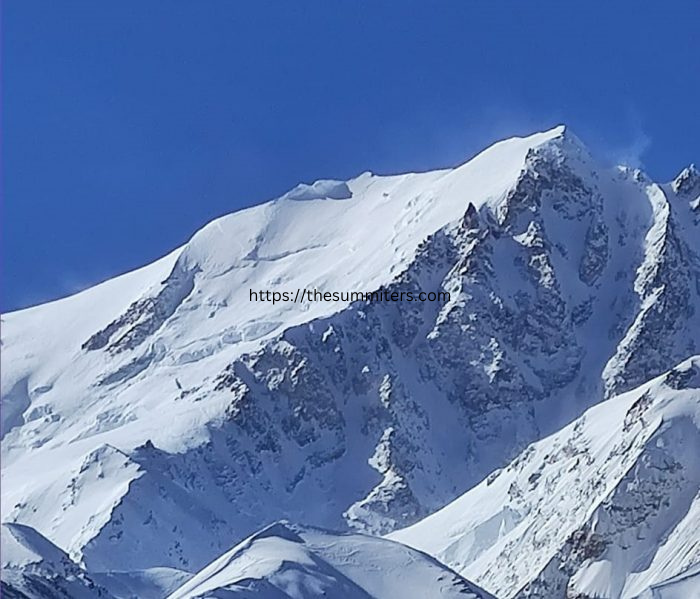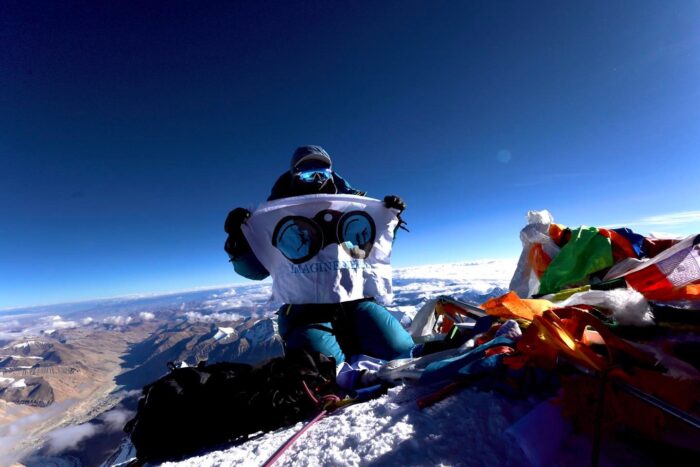Currently, only two expedition teams have confirmed their journey to Shisha Pangma, leaving others in anticipation, eagerly awaiting their permits. Among these climbers are those who aspire to conquer the majestic peaks that stand over 8,000 meters tall, with Shisha Pangma being their next conquest.
In addition to the ambitious climbers, there’s talk among some teams about a poignant mission: retrieving the bodies of four fellow climbers who tragically lost their lives in avalanches last autumn. However, concrete plans for this endeavor remain undisclosed, adding another layer of uncertainty to the situation.
Adding to the complexity Mingma G a highly recognized guide with a remarkable determination may not be participating in this expedition. For Mingma G this decision could be undoubtedly stamp the end of his lifelong dream of being the first Nepalese climber to summit all 14 of the world’s 8,000 meter peaks without relying on supplementary oxygen.

Prepping for the Climbing Season
Climbalaya is gearing up for their expedition to Shisha Pangma, scheduled from April 9 to May 19. Their partnership with the China-Tibet Mountaineering Association (CMTA) ensures they secure the necessary permits smoothly.
“We’re aiming to cross the border around the second week of April,” a spokesperson shared with ExplorersWeb, highlighting the precision in their planning.
Traditionally, Climbalaya and Seven Summit Treks have teamed up for such endeavors. However, this time, they’ve decided to split responsibilities on the mountain. While they’ll still collaborate, each group will handle specific tasks independently. For instance, they’ll share responsibilities like rope fixing but operate with separate teams, optimizing efficiency and safety.”
Some well-known climbers, familiar to the mountaineering community, are determined to complete their remarkable feat of scaling all 14 of the world’s highest peaks, each surpassing the 8,000-meter mark. Among these climbers are Naoko Watanabe from Japan, Grace Tseng from Taiwan (although doubts linger about her ascent of Manaslu), and Mario Vielmo from Italy, who’s aiming for a no-oxygen climb.

Vielmo shared with ExplorersWeb that Seven Summit Treks has greenlit their expedition, despite the substantial cost involved. Despite being the shortest of the 14 giants at 8,027 meters, a commercial expedition to Shisha Pangma can still demand a hefty fee ranging from $25,000 to $35,000.
Meanwhile, the uncertainty surrounding permits in Tibet has prompted some expedition companies to contemplate abandoning their plans. Imagine Nepal is one such company grappling with this decision. Mingma G, the head of Imagine Nepal, elaborated on the predicament to ExplorersWeb.
We’re stuck in a waiting game, lamented Mingma G, a highly experienced guide. If the permits are delayed until late in the season, I won’t have the opportunity to lead the expedition. I’ve committed to leading a significant team up Everest from the Nepal side, and their preparation cannot be compromised.
Oxygen Tanks Now Mandatory for Tibet Climbs
Another critical factor drawing climbers to Shisha Pangma during spring is safety. Mingma G emphasized that while April typically offers favorable conditions as the season progresses the risk of avalanches and hidden crevasses increases significantly.
For Mingma G reaching the summit of Shisha Pangma would mark the top of his remarkable journey to become the first Nepali to conquer all 14 of the world’s towering 8,000 meter peaks without supplemental oxygen. However even with a timely permit, Mingma G faces a setback. The China Tibet Mountaineering Association (CMTA) now mandates the use of bottled oxygen for climbers tackling the three Tibetan 8,000 meter peaks Shisha Pangma Cho Oyu and the north side of Everest. This rule also poses a challenge for Mario Vielmo, the Italian climber renowned for his oxygen-free ascents.
Reflecting on his aspirations, Mingma G shared, “As a Sherpa with extensive climbing and guiding experience, the allure of achieving this feat is profound. It’s a chance to represent my community on an international stage. However, the prospect of climbing without oxygen, especially while leading a team, presents its own set of challenges.”
The Impact of High Altitudes
According to Mingma G, “The longer we stay at 8,000 meters, the more damage it inflicts on our brain cells.” He reveals that he’s already grappling with memory loss as a consequence. “Unlike our foreign counterparts, who typically undertake just one or two expeditions annually and then have plenty of time for recovery, we Sherpas spend the majority of our time in the mountains. This continuous exposure to extreme altitudes results in ongoing harm to our bodies without adequate opportunities for recuperation.”
Additionally, Mingma G clarifies that he harbors no competitive aspirations against Nirmal Purja in terms of being the first Nepalese climber to summit without supplementary oxygen. Although Purja hails from Nepal, he holds a UK passport and does not share Sherpa heritage.”
Rescue Operations in Progress
Efforts are under weigh for two separate missions focused at recovering the bodies of climbers who tragically lost their lives in avalanches on Shisha Pangma last autumn. These incidents occurred among a dangerous pursuit to become the first American woman to conquer all 14 of the towering 8,000 meter peaks.
Among the victims were Anna Gutu and Mingmar Sherpa, who perished in the initial avalanche. Remarkably, their bodies were not buried by the snow and were moved to a tent at Camp 2, where they have remained since.
Adding to the complexity, the leader of one of the expeditions, who witnessed the events from below, recently disclosed on X about an impending mission to retrieve the bodies, shedding light on the ongoing efforts to bring closure to this tragic chapter.”
“We’ve received the green light from the CTMA and TMA [Tibet Mountaineering Association] to head back to Camp 2, where the bodies are, and escort them back to their families” the statement assured. The U.S. government along with the Nepalese Embassy in Beijing and the NMA [Nepal Mountaineering Association] have been essential in assisting us to protect the required permits. We’ve just been notified that our permit application has been approved. Our mission to repatriate will commence come April.
While the announcement confirms the plan to retrieve the bodies, specific details regarding the personnel involved in the recovery remain undisclosed. Additionally, Elite Expeditions, the organization making the announcement, has yet to unveil any commercial expeditions planned for the spring season.”
Continuing the Search
There’s an ongoing effort to recover the bodies of two more climbers, Gina Marie Rudzidlo and Tenjen Lama. Kristin Harila is leading this initiative, aiming to gather the necessary funds for the mission. The proposed plan involves utilizing helicopters to conduct aerial searches over the area where the climbers were last known to be, hoping that the Recco reflectors they wore will aid in locating them.
However, this strategy may face challenges if the bodies have been swept deep into crevasses, as some witnesses have reported. Moreover, obtaining approval for helicopter flights in Tibet, where dedicated aerial rescue services are lacking, remains uncertain.
Despite these hurdles, Harila’s GoFundMe campaign has seen little activity in the past month. Currently, only 91,902 Norwegian Krone (equivalent to about $8,500) has been raised out of the required 3,190,000 Krone (roughly $300,000).”